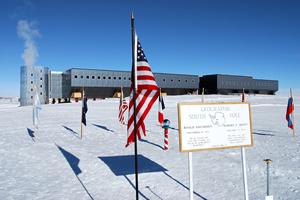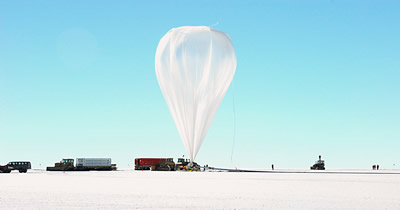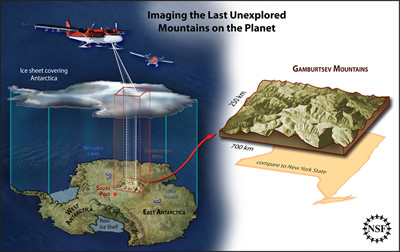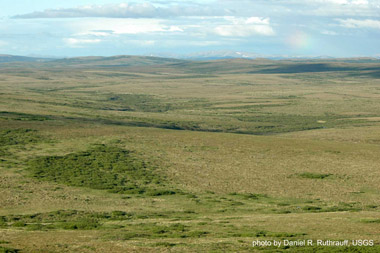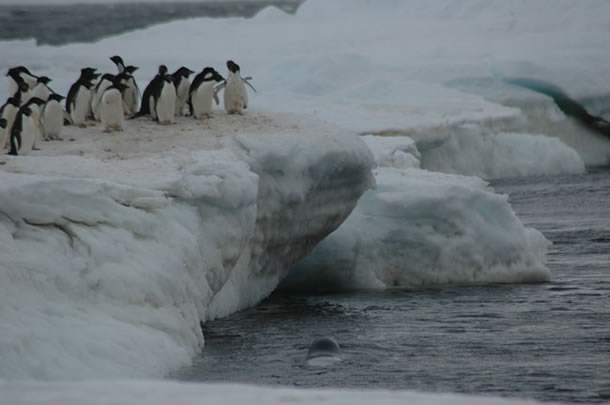Click on image for a larger and more detailed map.
NASA
Antarctica
Antarctica is unique. It is the coldest, windiest, and driest continent on Earth. The land is barren and mostly covered with a thick sheet of ice. Antarctica is almost entirely south of the Antarctic Circle at 66.5S latitude. With 14 million sq km of land, it is roughly one and a half times the size of the United States.About 98% of Antarctica is covered with a thick ice sheet. Ice shelves extend out over the Ross and Weddell Seas. The little exposed land that there is between the ice is very rocky. Under the ice, an area called the Bentley Subglacial Trench has the world’s lowest land elevation that is not under seawater. This area is 2,555 meters below sea level. In several places under the ice sheet, there are freshwater lakes.
Temperatures can be very low. East Antarctica is colder than West Antarctica because it has a higher elevation. The Antarctic Peninsula has the warmest climate on the continent, however high temperatures still average slightly below freezing.
The highest mountain, Vinson Massif, is 4897 meters (16,050 feet) above sea level. Vinson Massif formed as faults shifted sending blocks of the Earth’s crust to higher elevations. Several of the other mountains in Antarctica are active volcanoes, including those on Deception Island and in remote parts of West Antarctica.
The Antarctic Treaty, first signed on December 1, 1959, established how Antarctica would be shared by nations of the world as a place for scientific research. According to the treaty, no military from any country is allowed in Antarctica except to help with the scientific research. Each year, representatives from the 45 nations that have signed the treaty meet to make decisions about how Antarctica will be used for scientific research.







